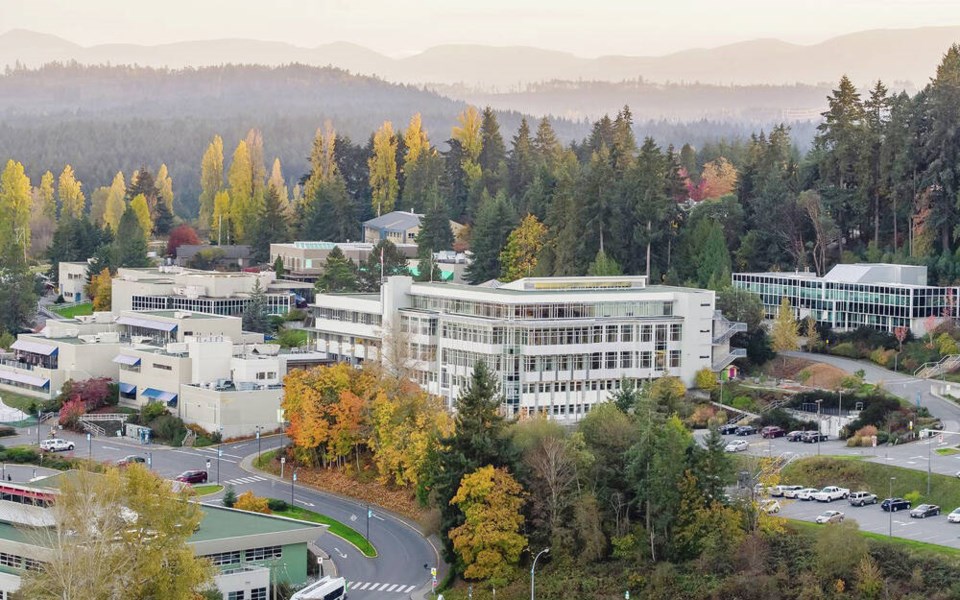They play critical roles in a surprising number of places, including food delivery apps such as DoorDash and Uber Eats that bring food to your front door.
And the classes teaching the various applications of geographic information systems (GIS) — in natural resource development, urban planning, emergency response and climate change — at Vancouver Island University are said to be in demand and have been financially viable for 20 years.
But Vancouver Island University is considering cancelling the programs; the board of governors is to vote on the issue on Thursday.
Paul Zandbergen, a GIS professor at VIU, said he’s feeling optimistic.
“The board has the broader interests of the university in mind, so hopefully they’ll be able to see the value of our program.”
The advanced diploma and master's in GIS are the third-largest program of its kind in Canada, after the B.C. Institute of Technology and Fleming College in Ontario, he said.
Those calling for cancellation say the programs are expected to run a deficit in the coming school year.
Zandbergen said he understands the motivation discuss cancellation.
“Anything that sounds like it could save money is being looked at favourably.”
VIU administrators have been grappling with a multimillion-dollar deficit.
The university has proposed reducing academic spending by 10 per cent and non-academic by five per cent in the next two fiscal years in a bid to balance the budget.
Non-academic departments have been required to reduce expenditures by five per cent in the current 2023-24 budget.
The geography department has put together a plan that would resolve any projected deficits, but that proposal has so far been rejected, he said.
A memo to the board of governors from Michael Quinn, VIU provost and vice-president academic, and Elizabeth Brimacombe, the dean of social sciences, estimates the two GIS programs will run a $150,000 deficit in the 2024-2025 school year.
Zandbergen questioned the estimate.
“Administration has not released their accounting,” he said.
“They have not provided justification for why they think that the program is going to lose money.”
John Ziemanski, president of Coastal Resource Mapping, a Nanaimo-based GIS company that’s worked on more than 2,000 projects since 1998, said he prefers to hire from VIU. Locally, companies trust in the quality of the VIU programs, he said. “I’ve been very happy with the graduates.”
He said he’ll have to look to the Lower Mainland for talent if the VIU program closes.
Miranda Smith, a senior professional biologist at M.C. Wright and Associates Ltd, a Nanaimo-based consulting company that works on natural resource management, First Nation stewardship programs, and contracts with the federal government, said GIS has become an undercurrent of everyday work.
Use of GIS can be found in the mid 1800s, when it was deployed to trace and identify the source of a cholera outbreak in England, she said.
The use of GIS is now embedded into virtually every sector, she said. ”People just don’t realize how much they use it on a daily basis.”
Fourteen years ago, her company took a gamble and enrolled Smith into a GIS program at VIU. “It was a turning point in how we run our business,” she said.
GIS has become an important tool in reclaiming Indigenous sovereignty, Smith said.
“There’s a big focus on understanding resources within [Indigenous] territory.”
But First Nations don’t always have the capacity to present that information to external stakeholders who are operating on their territory, she said.
“Right now, a lot of it is managed by consultants like ourselves. But the goal is to have them be able to work with it on their own.”
Cancelling the program would increase the barriers for local area First Nations to attain that expertise, Smith said.
Beatrice Proudfoot, an aquatic science biologist with the Department of Fisheries and Oceans, said she’s grateful that she had the opportunity to study at one of the GIS programs at VIU.
“It opened a lot of doors for me,” she said. “Maps are just a powerful tool for communicating important information.”
>>> To comment on this article, write a letter to the editor: [email protected]




